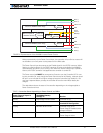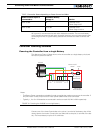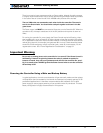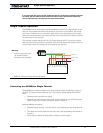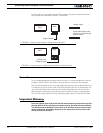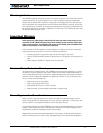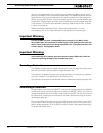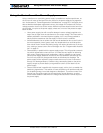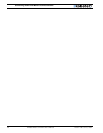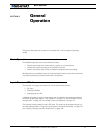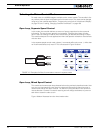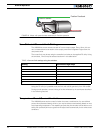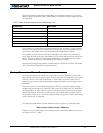
Connecting Power and Motors to the Controller
38 AX3500 Motor Controller User’s Manual Version 1.9b. June 1, 2007
that time, the regenerated current will attempt to flow back to the battery. Since none is
present, the voltage will rise to potentially unsafe levels. The AX3500 includes an overvolt-
age protection circuit to prevent damage to the output transistors (see “Overvoltage Pro-
tection” on page 38). However, if there is a possiblity that the motor could be made to spin
and generate a voltage higher than 40V, a path to the battery must be provided, even after
a fuse is blown. This can be accomplished by inserting a diode across the fuse as shown
in Figure 10 on page 32.
Please download the Application Note “Understanding Regeneration” from the
www.roboteq.com for an in-depth discussion of this complex but important topic.
Important Warning
Use the AX3500 only with a rechargeable battery as supply to the Motor Power
wires (VMot tabs). If a transformer or power supply is used, damage to the controller
and/or power supply may occur during regeneration. See “Using the Controller with
a Power Supply” on page 39 for details.
Important Warning
Avoid switching Off or cutting open the main power cables (VMot tabs) while the
motors are spinning. Damage to the controller may occur.
Overvoltage Protection
The AX3500 includes a battery voltage monitoring circuit that will cause the output transis-
tors to be turned Off if the main battery voltage rises above 43V.
This protection is designed to prevent the voltage created by the motors during regenera-
tion to be “amplified” to unsafe levels by the switching circuit.
The controller will resume normal operation when the measured voltage drops below 43V.
Undervoltage Protection
In order to ensure that the power MOSFET transistors are switched properly, the AX3500
monitors the internal 12V power supply that is used by the MOSFET drivers. If the internal
voltage drops below 10V, the controller’s output stage is turned Off. The rest of the control-
ler’s electronics, including the microcomputer, will remain operational as long as the inter-
nal voltage is above 8V.
The internal voltage will be the output of the DC/DC converter which will be a solid 12V as
long as either of the main battery or backup voltage is higher than 12.5V. If the main and
backup voltage drop below 12.V, the DC/DC converter’s output will be approximately 0.5V
lower than the highest input.




